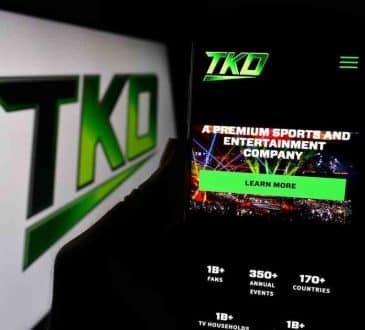Some Thoughts on Improving Sales Efficiency at a Time of Accelerated Digital Transformation

One inescapable business trend has been all over the news lately. It’s a trend that goes by a lot of different names. Some people refer to this trend as the AI revolution, but I prefer to call it Accelerated Digital Transformation. That’s a label that covers a lot of territory, I know, but there’s a lot going on right now, and a big label seems to fit what we’re dealing with.
Regardless of what we choose to call this trend, the reality is that leaders are responsible for coming to terms with some truly momentous changes brought about by advances in information technology. We are all challenged to keep up with a digital world that is accelerating daily. And the hard truth is that some teams and some organizations are better prepared for these changes than others.
I don’t see this trend receding anytime soon. The leaders who are best prepared for it, in my view, are the ones who understand that this tsunami of technological and information transformation has been building up strength for some time and is only going to intensify. These leaders, as I see it, are pursuing five proven best practices to make sure they’re positioned for success near the top of that wave – and not flattened by it.
Best practice #1: Accelerate what’s already working. Dr. Frank Cespedes, who runs the entrepreneurial program at Harvard Business School, observed in his latest book, Sales Management that Works, that pandemics don’t really foster innovation; they accelerate innovation. The digital transformation was well underway before COVID hit; now it’s accelerating. We are seeing it move into progressively exponential expressions of warp speed – and the possibilities are mind-boggling. But in and amongst the breakthroughs and pitfalls, we always want to keep an eye out for the adaptations we’ve made that are already paying dividends and find ways to use them elsewhere.
Case in point: In early 2019, remote work teams were an interesting idea that some people were willing to try. Now, in 2023, it’s how a lot of organizations – Sandler, for instance – are doing business. Does that mean this way of working is right for everyone? Of course not. The point is, we need to look closely at decisions we’ve already made that have successfully leveraged digital resources, decide which of those have delivered positive results, and then see if we can identify any plays we’ve called in the past that we could be calling a little more consistently.
Best practice #2: Listen to the field. There are more game-changing digital tools and applications in play and on the horizon than one person can possibly keep track of. For instance, if we’re looking at sales, we’ve got ever-advancing software that’s helping us find the right types of buyers and prospects to talk to with greater and greater efficiency; we’ve got voice analysis intelligence tools that analyze our team’s calls so we can spotlight what works and what doesn’t; we’ve got incredibly sophisticated autodialers that maximize our team’s available time; and we’ve got large-language-model applications like ChatGPT that can create output that seems both glove-fitting to the prompt we’ve given and human-like in its insights. The point is, there’s even more relevant stuff on the way – much more – that we don’t know about yet. There always will be.
So: What do you do to stay up-to-date? You call on the people on the front lines. You pick their brains.
If you’re leading a team or an organization, it’s worth your while to set aside some time to interact with people in your world who may have identified something on the digital horizon that you haven’t … so you can learn more about what they’re doing, and also learn what they like (or don’t like) about the tools they’re using.
Best practice #3: Look critically at the overlaps and the redundancies in your organization. We may not think of technology overlap as being a big problem, but in a lot of organizations, it really is. At our company, we recently saved over six figures just by identifying things like licenses for people who didn’t work for us anymore, and multiple applications we were paying for that did essentially the same thing.
Every time a new leader comes into an organization, they bring along their own pet technology. They’ll say things like, “I like to use such-and-such.” That’s code for “I don’t want to learn what the rest of the company is using.” Some companies we’ve seen utilize over 250 apps! That’s not just inefficient – it also makes connectivity harder for everyone.
If we’re going to leverage these amazing tools, we need to make some choices. We need to change ways of working that leave people disconnected. Disconnection is a major pain point for a lot of the CROs we work with, and it’s particularly common in situations where the organization has grown through acquisition. If we don’t address this problem, we’re left with a bunch of siloed technology that doesn’t deliver ROI, and a bunch of teams that are not in sync.
Best Practice #4: Distinguish technology from methodology. Technology on its own can be awesome … but we always need to bear in mind that the technology won’t make calls for us. We still have to decide which tool belongs where and how it’s going to be used. We still have to make it easy for salespeople to get access to the tools and the expertise they need, so they can implement the right best practices, with the right person, at the right moment. Consider a tool like Vidyard, which makes it easy for salespeople to record and send personalized videos to a given buyer or influencer. On its own, Vidyard is great. But how much greater is it when our team knows exactly when to use it, how to use it, and what the best practices have most often led to success in our selling environment?
We need to give our people the what, the when, and the how of the technology we choose … and we need to make it easy for them to seamlessly access that technology, at the moment they should be using it. In other words, we need to think about methodology. Both technology and methodology are vitally important. Yes, you do want technology that rocks – but since people still buy from people, you also want to be sure that technology is implemented in a way that supports your team and your sales process.
Best Practice #5: Adapt … or get left behind. You and your team want to ride the digital transformation tsunami, not get swept away by it. That means adapting constantly.
No matter what the size of your organization, there is something you can do, right now, to adapt to the current phase of accelerated digital transformation – a transformation being driven, more and more, by breakthroughs in artificial intelligence. Doing nothing in terms of AI is not an option if you expect your team and your organization to thrive over the next few years.
As a recent article in the Harvard Business Review pointed out, no matter where your company is right now in terms of its relationship with a current or prospective buyer, AI can help you strengthen ties and improve processes. The piece describes a “Sales Success Matrix,” which is briefly summarized below. (The examples I share are from our own experience at Sandler.)
If your relationship with the buyer is that of a “transactional vendor” or a “preferred supplier” … you can use basic AI applications to minimize costs and maximize efficiency. Deal IQ, a pipeline management/deal coaching tool, can help you to dramatically improve pipeline hygiene. Chatbots are another example of this kind of adaptation.
If your relationship with the buyer is that of a “solution consultant” … you can use more advanced AI tools to maximize the sales team’s efficiency and do a better job of targeting opportunities and pain points. Gong, for instance, can help you and your team identify and fix weak points in sales dialogues and in your overall sales process.
If your relationship with the buyer is that of a “strategic collaborator” or a “trusted co-creator” … you can share cutting-edge AI applications that conduct analyses that yield deep insights for both sides. HubSpot’s Einstein suite, for example, uses machine learning to help business analysts find key insights that are hidden in their data, automatically explain those insights in simple language, and then help you circulate those insights to the people who will benefit from seeing them. For example, Einstein can predict attrition in financial services, optimize shelf space in consumer goods, predict the demand for products by store location, and more.
These five best practices will help you and your team to get – and stay – right where you belong on the digital wave: on the crest, and moving rapidly in the direction of your choice.
Written by David H. Mattson.
Have you read?
Best Fashion Schools In The World.
Best Business Schools In The World.
Best CEOs And C-Suite Executives In The World.
World’s Most Influential and Innovative Companies.
World’s Best Hospitality And Hotel Management Schools.
Add CEOWORLD magazine to your Google News feed.
Follow CEOWORLD magazine headlines on: Google News, LinkedIn, Twitter, and Facebook.
This report/news/ranking/statistics has been prepared only for general guidance on matters of interest and does not constitute professional advice. You should not act upon the information contained in this publication without obtaining specific professional advice. No representation or warranty (express or implied) is given as to the accuracy or completeness of the information contained in this publication, and, to the extent permitted by law, CEOWORLD magazine does not accept or assume any liability, responsibility or duty of care for any consequences of you or anyone else acting, or refraining to act, in reliance on the information contained in this publication or for any decision based on it.
Copyright 2024 The CEOWORLD magazine. All rights reserved. This material (and any extract from it) must not be copied, redistributed or placed on any website, without CEOWORLD magazine' prior written consent. For media queries, please contact: info@ceoworld.biz
SUBSCRIBE NEWSLETTER








